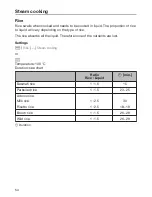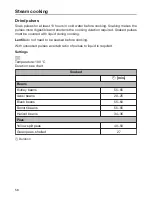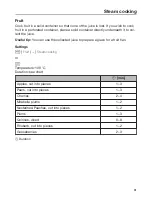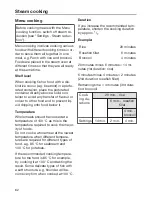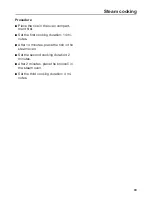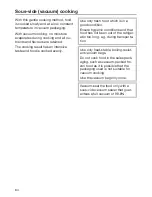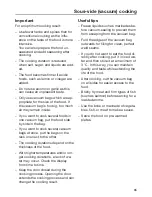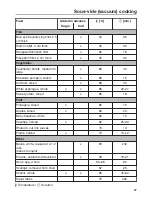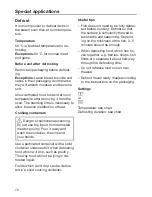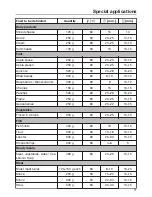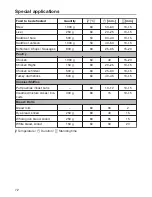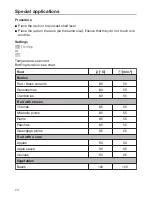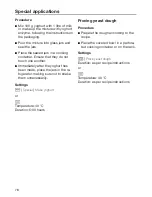
Sous-vide (vacuum) cooking
65
Important
For an optimum cooking result:
– Use fewer herbs and spices than for
conventional cooking as the influ‐
ence on the taste of the food is more
intensive.
You can also prepare the food un‐
seasoned and add seasoning after
cooking.
– The cooking duration is reduced
when salt, sugar, and liquids are add‐
ed.
– The food becomes firmer if acidic
foods, such as lemon or vinegar are
added.
– Do not use alcohol or garlic as this
can cause an unpleasant taste.
– Only use vacuum bags which are ap‐
propriate for the size of the food. If
the vacuum bag is too big, too much
air may remain inside.
– If you want to cook several foods in
one vacuum bag, put the food side
by side in the bag.
– If you want to cook several vacuum
bags at once, put the bags on the
rack one next to the other.
– The cooking durations depend on the
thickness of the food.
– With higher temperatures and/or lon‐
ger cooking durations, a lack of wa‐
ter may occur. Check the display
from time to time.
– Keep the door closed during the
cooking process. Opening the door
extends the cooking process and can
change the cooking result.
Useful tips
– Freeze liquids such as marinades be‐
fore vacuum-sealing to prevent them
from escaping from the vacuum bag.
– Fold the edges of the vacuum bag
outwards for filling for clean, perfect
weld seams.
– If you do not want to eat the food di‐
rectly after cooking, put it in iced wa‐
ter and then store it at a maximum of
3 °C. In this way, you can maintain
quality and taste while extending the
life of the food.
– After cooking, cut the vacuum bag
on all sides for easier access to the
food.
– Briefly fry meat and firm types of fish
(such as salmon) before serving for a
roasted aroma.
– Use the brine or marinade of vegeta‐
bles, fish, or meat to make a sauce.
– Serve the food on pre-warmed
plates.




